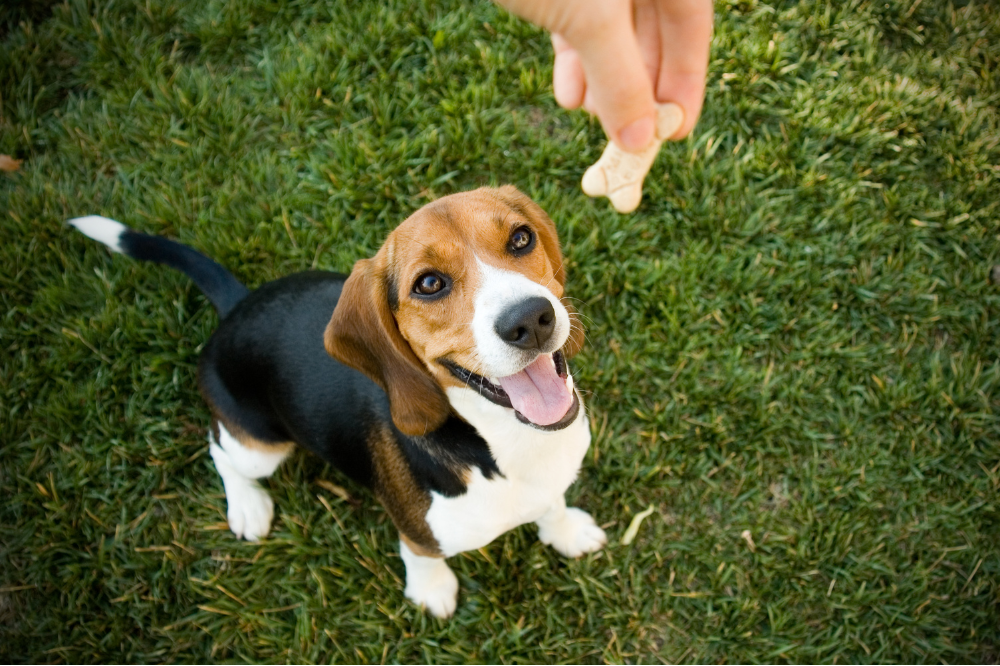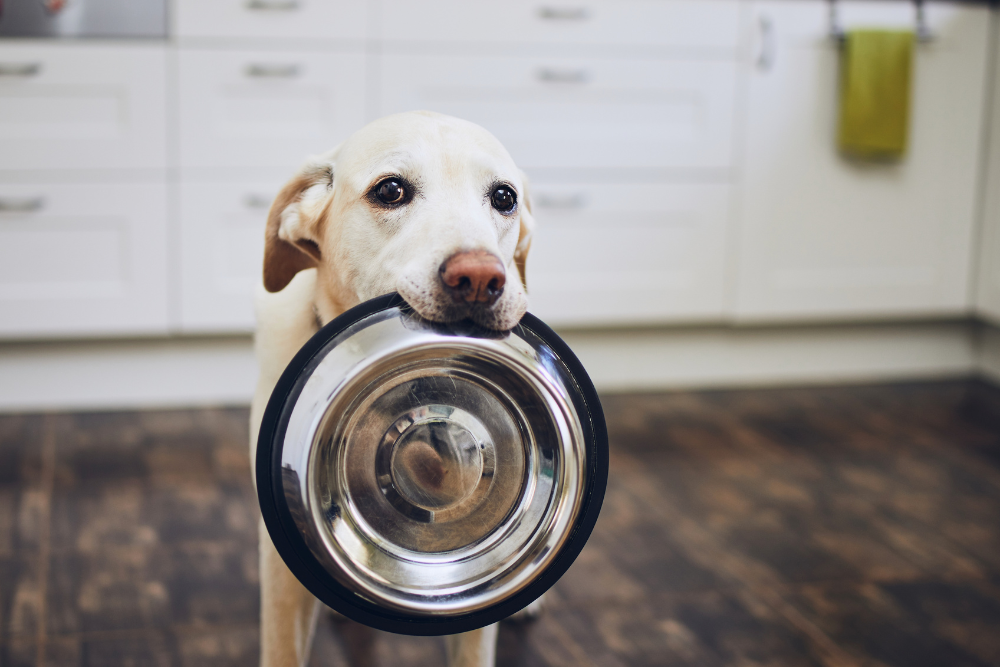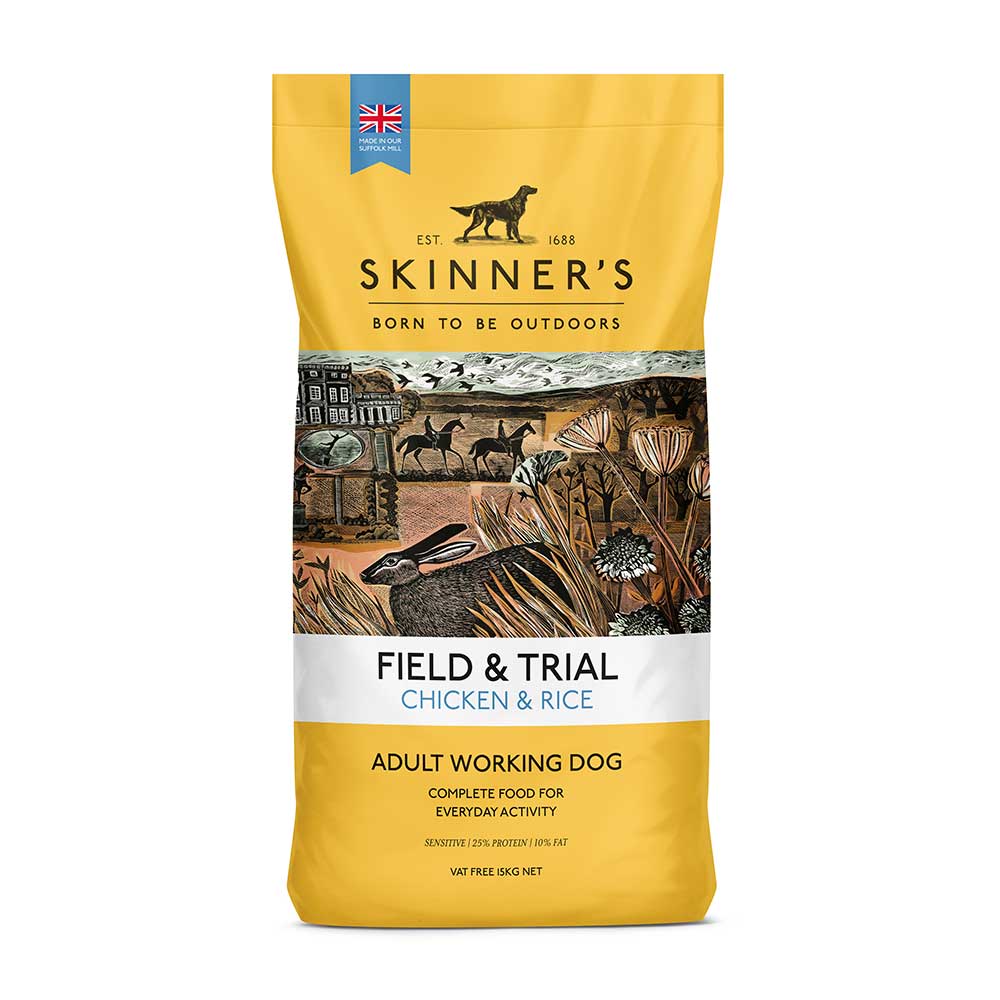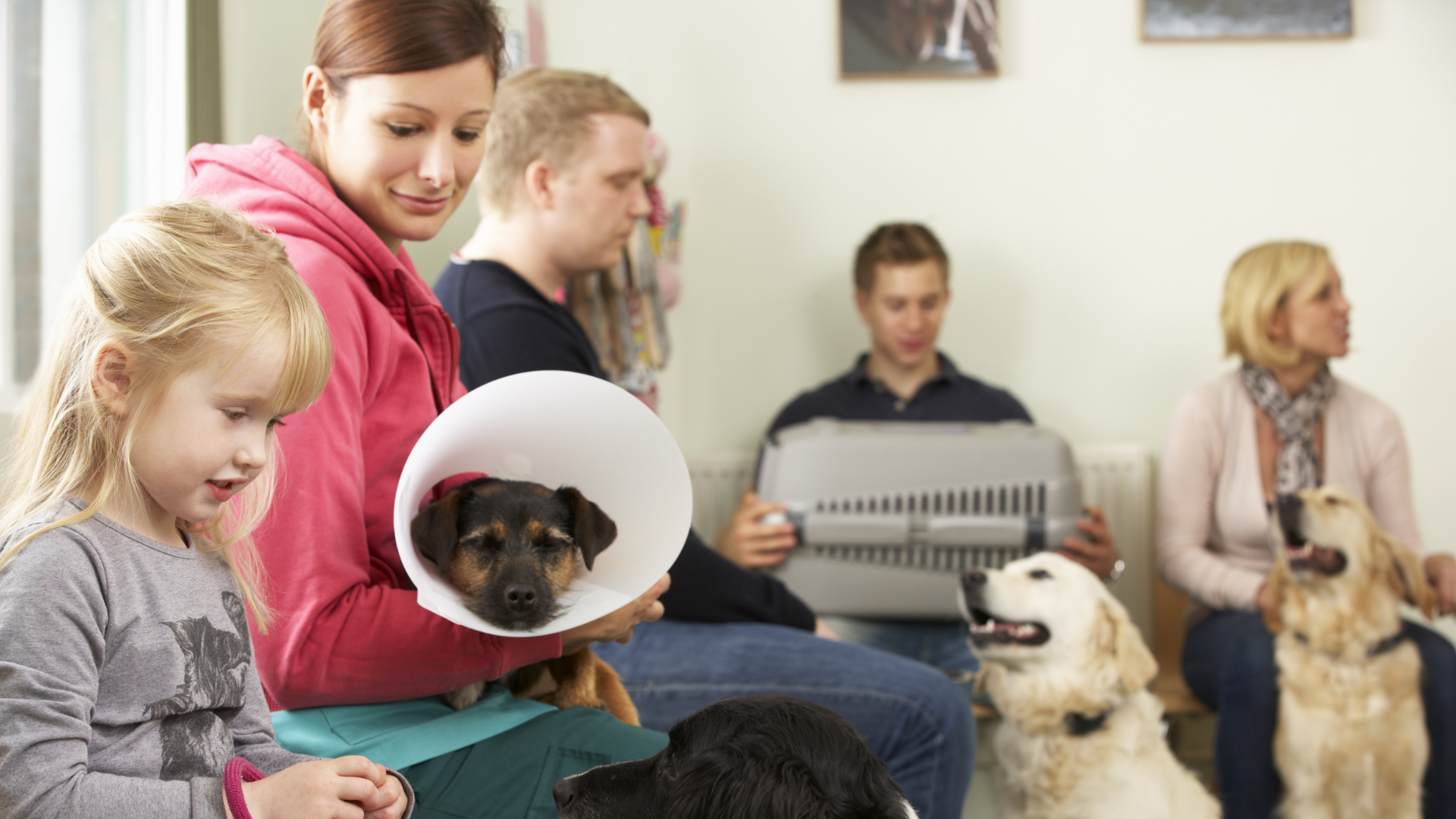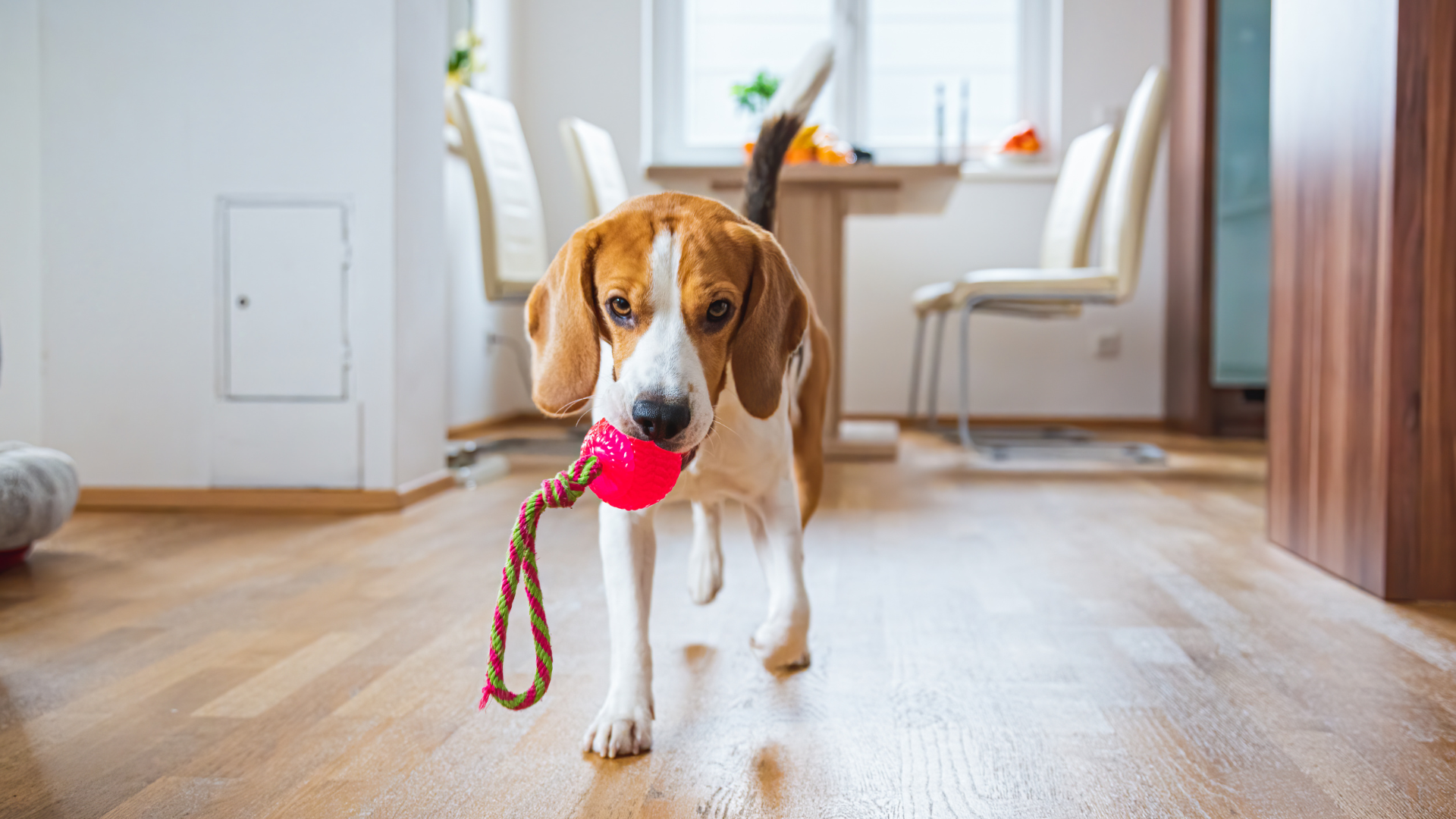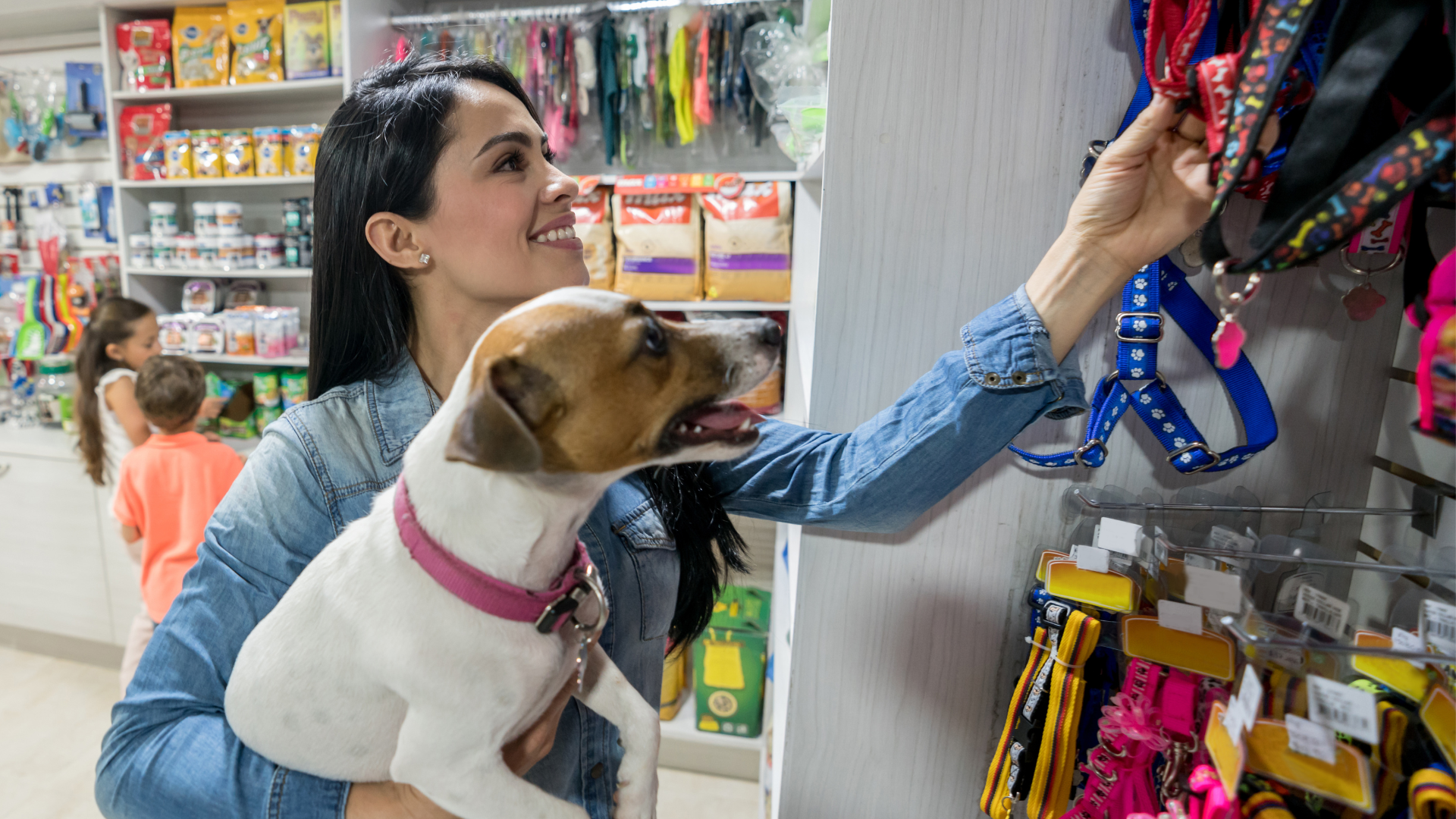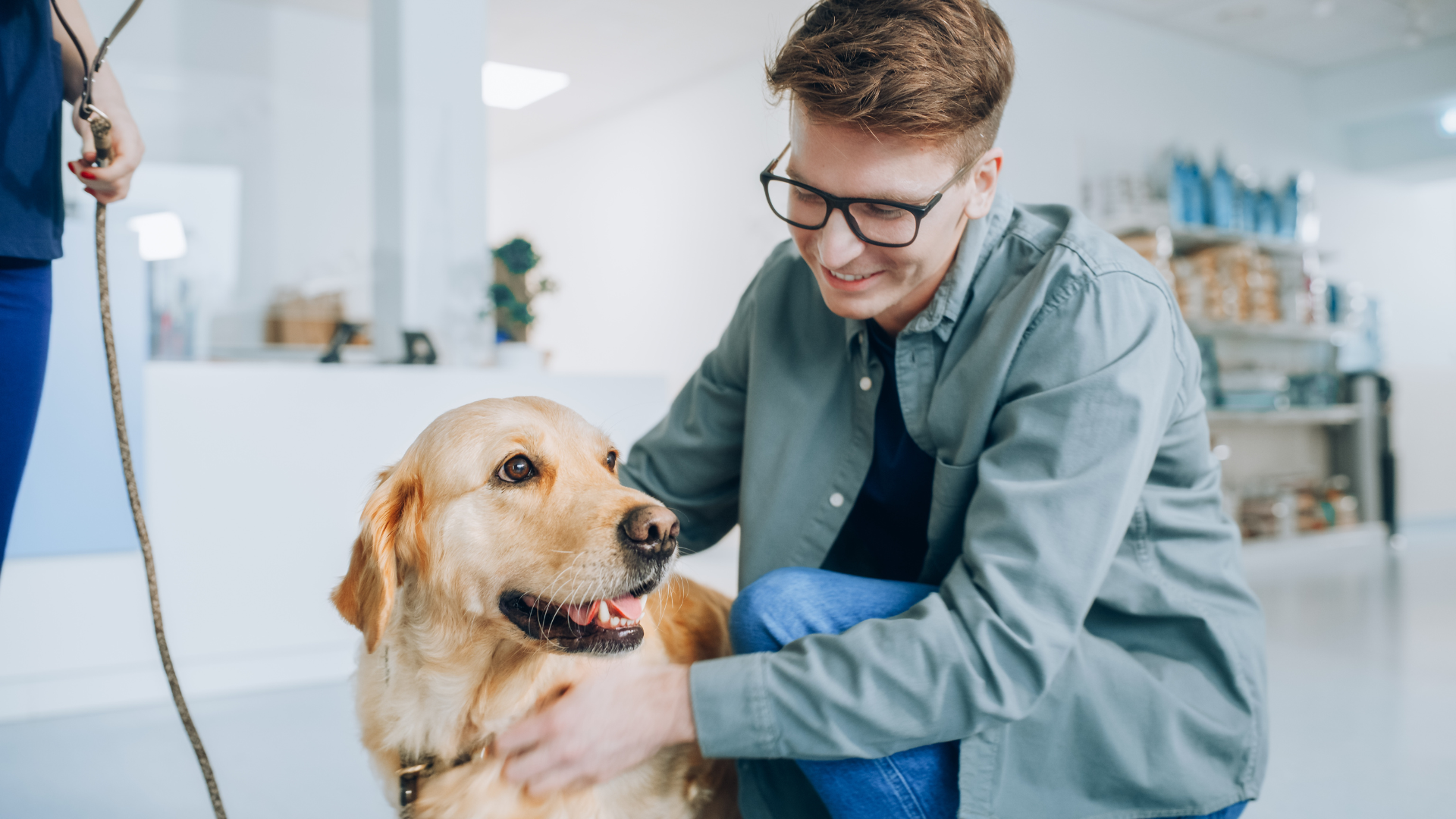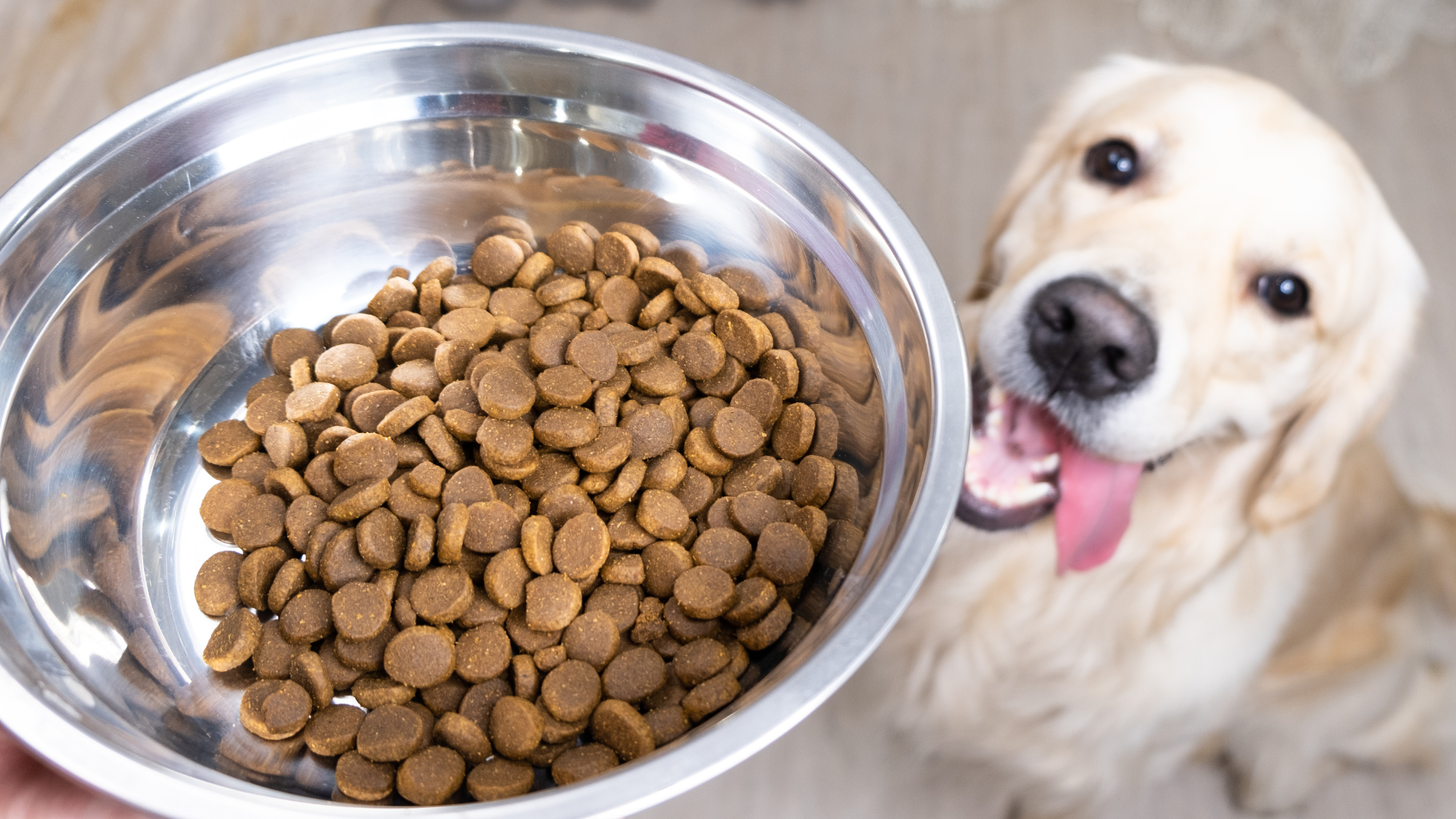
By Zoe Russell, BSc (hons), ANutr, Nutrition Officer for Skinner’s
Obesity and excess weight gain are common problems in both humans and pets. In simplified terms, obesity can be defined as abnormal or excessive fat accumulation that presents a risk to health.
Dogs who are obese can also have a shortened life span compared to those with a healthy weight, with one study suggesting a reduced lifespan of just over two years. Obesity is also associated with an increased risk of developing conditions such as osteoarthritis, cancer, diabetes mellitus and respiratory diseases. More and more, obesity is being formally recognised as a disease in both human and animal medicine.
It is generally agreed that the prevalence of overweight and obese dogs has increased in recent years. A new survey by UK Pet Food, published in their 2024 obesity report, asked vets what percentage of pets seen in their practice are overweight or obese. The survey found that 43% of cats are overweight, while 50% of dogs are overweight. These are figures that have increased over time, indicating a growing issue.
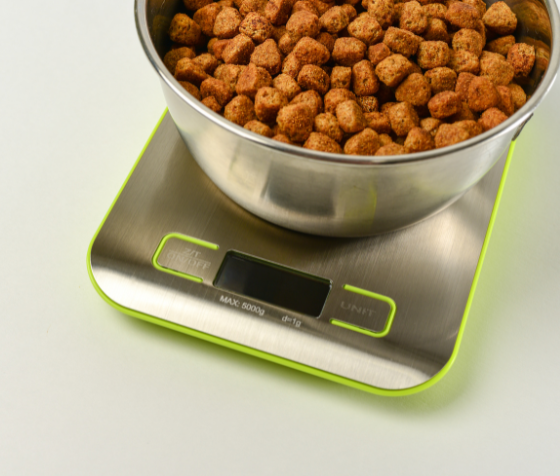
Weighing out the options
It’s extremely important for pet owners to weigh their dog’s food using accurate, calibrated scales. Using equipment such as scoops, mugs or measuring cups can be highly inaccurate and lead to overfeeding (or even underfeeding in some cases!).
One study found that using a measuring cup to portion a dog’s food led to an overestimation in portion sizes up to 80% of the time. To understand why scoops, mugs and cups can be inaccurate, there are several influential factors:
-
Extruded kibbles can vary in terms of bite size, density and expansion, whether that’s between different products or between different batches of the same food, meaning that measuring by eye is not always precise.
-
Cups or mugs can vary greatly in size – for example a teacup can be around 200ml, while a large mug can be larger than 500ml, therefore simply saying an owner feeds “two cups per day” may not be consistent in terms of volume.
-
Even specialised measuring cups aren’t always reliable as the calibration of the lines can be inaccurate and inconsistent.
-
We are all human and the way you measure something may not be the same way your partner or parent measures something. Therefore, each family member may portion the food slightly differently.
When following the manufacturer’s feeding guidelines, it’s also important owners know what their dog’s ideal, current weight is (essentially the weight their vet wants them to be right now). Owners often don’t know how much their dog should weigh, so we always encourage them to speak with their vet to understand more.
This information is important because the feeding guidelines from manufacturers, such as Skinner’s, recommend that owners feed based on the dog’s ideal weight, rather than their current weight. For example, if a dog weighs 25kg, but should weigh 20kg, follow the guidelines for a 20kg dog.
Feeding the right diet
Fat is an important source of energy, particularly for active dogs, as it provides around twice as many calories per gram compared to protein or carbohydrates.
However for less active dogs, excess fat and therefore excess energy in the diet may leave them pre-disposed to weight gain. That being said, we do still want a good level of digestible dietary protein in the diet (providing a dog has no health issues requiring restricted protein intake) to help maintain lean body mass. Furthermore, dogs may also benefit from a higher protein and higher fibre diet to support the feeling of satiety and fullness.
At Skinner’s we typically suggest the Field & Trial Light & Senior, as it’s one of our lowest fat and lowest calorie diets but still provides a digestible source of protein to support lean body mass. As the diet is more energy dilute, owners can still feed a “normal” portion, rather than a restrictive amount that may otherwise be deemed “unfair”. The Light & Senior also contains enhanced levels of glucosamine and chondroitin to support joint health and mobility.
Treats and titbits
If an owner is feeding additional food such as treats and titbits, this shouldn’t account for more than 10% of a dog’s daily calorie intake. This minimises the risk of over-feeding and also reduces the likelihood of unbalancing the diet. Therefore if an owner is feeding other foods, we generally suggest reducing our feeding guidelines by around 10% to accommodate for the additional food.
In many cases, owners may not realise how calorie-dense some of their favourite treats are. For example, a dental stick may be around 78 Kcal, which for an average 15kg dog getting up to 1 hour walking per day on lead, that could be more than 10% of their daily calorie intake.
It is also estimated that a 15kg dog may need to do an additional 10,000 steps to account for a 78 kcal treat like this in their diet. Given that dogs may do around 7,000 steps per day (as estimated in one study), this is a significant increase in energy expenditure to account for this treat. That is where controlling calorie intake through food is often more effective than increasing energy expenditure through exercise.
Therefore, if possible, we do suggest owners try cutting out treats altogether. If an owner feels “cruel” not providing a form of reward to their dog, they can use their kibbles as training treats. We would suggest weighing out the dog’s full daily intake in the morning and putting it to one side. The owner can then take kibbles out of this portion throughout the day to use as training treats. That way they know they are not over-feeding.
Alternatively, owners could use low calorie veg such as carrot or courgette as a reward. Often, it’s simply the action of giving your dog something that they find exciting, rather than the object itself.
Satiety and appetite
Every dog is different and as such, some dogs will have a bigger appetite than others. We do also know that some breeds can be pre-disposed to having a bigger appetite than others. For example, we now know that some labradors have a genetic mutation in the pro-opiomelanocortin (POMC) gene. This mutation can affect the way they behave around food, as it can lead to an increased appetite and reduced feeling of satiety. Other breeds that have been more commonly associated with excess weight gain include Pugs, Beagles, Cocker Spaniels and Golden Retrievers.
To help support the feeling of satiety, we generally suggest using equipment such as slow feeders, puzzle feeders or Kongs. This helps prolong mealtimes and slow down feed intake, which may help to increase the feeling of satiety. It also helps keep the dog occupied and provide a level of enrichment for the dog during mealtimes. Alternatively, if owners are using wet foods such as the Skinner’s Field & Trial wet diets, these can easily be spread into Likimats and Kongs to help prolong mealtimes, while providing a source of enrichment.
In addition, evidence suggests the shape of the kibble can be influential on meal duration and food seeking behaviour. Research has shown that cross-shaped kibble may help slow eating down, increase chewing, and decrease food seeking behaviour compared to a round kibble. As such, weight maintenance diets will often have carefully selected kibble shapes to support the feeling of satiety.
Spaying and neutering
The process of spaying or neutering a dog is a common practice in most veterinary surgeries. However, as we know, the procedure can be a risk factor for the development of obesity.
There are a couple of reasons why spaying/ neutering is associated with unwanted weight gain; firstly, neutering is usually carried out in a young dog, around the same time their growth and energy needs will naturally decrease. In addition, reproductive hormones are recognized to have an influence on the metabolism and food intake, however after spaying, hormone production is altered which may therefore influence eating behaviours and weight gain.
Therefore once a dog has undergone the procedure, we usually suggest reducing our feeding guidelines by around 10%, to minimise the likelihood of weight gain. However, feeding guidelines are always just a guide and may need further adjustment to suit a dog’s individual needs.
Healthy joints
The best way to help maintain healthy joints in dogs is, first and foremost, keeping off excess weight. Maintaining a lean body mass helps to keep unwanted pressure off the joints and support freedom of movement. However, if owners are looking for further joint support in the diet, ingredients such as glucosamine and chondroitin are popular inclusions in pet food, as they are the building blocks of cartilage.
At Skinner’s, we use glucosamine and chondroitin in all our Puppy, Sensitive and Working 30 diets to support joint health. For enhanced joint support, we also add Joint Aid for dogs in our Field & Trial Maintenance Plus, and Field & Trial Turkey and Rice. This is a diverse joint supplement, containing 32 active nutraceuticals which supports their tendons, ligaments, synovial fluid and muscles. To learn more about Joint Aid for Dogs, visit gwfnutrition.com.
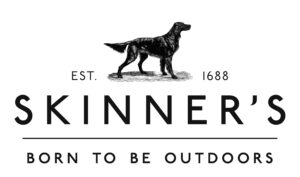
Skinner’s is a british family business with over 50 years of nutritional know-how. Rooted in canine science and a lifetime with their dogs, they understand what it takes to keep dogs active, healthy and ready for a challenge.
More about the author:
Zoe Russell, Nutrition Officer, Skinner’s

Zoe Russell, BSc (hons), ANutr graduated from Nottingham Trent University in 2019 with a degree in Animal Biology. During this time she co-authored a published paper (2020) – Drugs, dogs and driving: the potential for year-round thermal stress in UK vehicles. Since graduating, she has worked as the Nutrition Officer for the Skinner’s group. She is the proud owner of her rescue dog, Buzz, whom she does regular agility and cani-cross with.
The article was originally posted in The Cube magazine, February 2025 issue. Click here to read the magazine.
